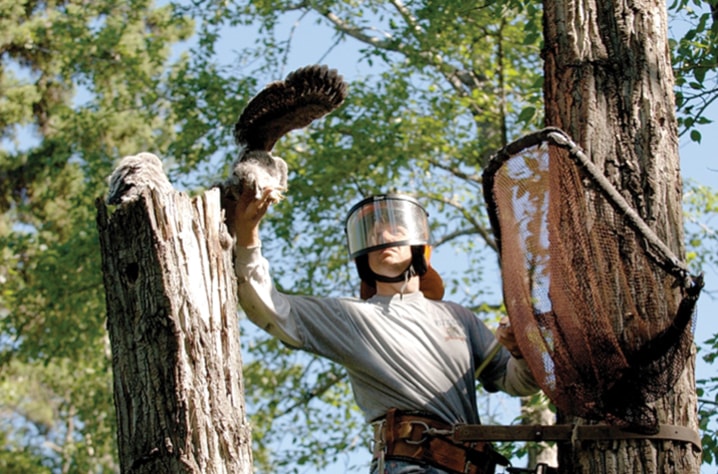Medicine River Wildlife Centre is studying how young orphaned animals and birds cope when they’re introduced into families in the wild.
And the centre near Spruce View is looking for the public’s help in its research.
Central Albertans can help out in three areas — if they have nesting sites for any species of birds; fox or coyote dens on property where humans and animals are living in harmony; and if they have white-tailed or mule deer does with young.
Executive director Carol Kelly said she hopes to get the studies underway as soon as the centre receives anticipated Alberta Fish and Wildlife approval.
Government permission is needed because transmitters are placed on the orphaned animals to keep permanent track of their whereabouts, Kelly said.
“We’re just doing what we’ve done in the past where we have a fostering program,” Kelly said.
Orphaned animals are introduced into new families in the wild. If a baby bluebird is placed in a box, for instance, it’s monitored to ensure all the babies survive, said Kelly.
Centre staff colour-mark the inside of a fawn’s ear and then get a landowner to watch out for the animal.
“We’re taking this (monitoring) one step further by putting on some transmitters, so we’ll be able to monitor them for a period of time,” said Kelly. “It’s stepping up the research to show how well this program works. We have to know our limitations, but we really believe we’re giving our wildlife a better chance by giving them a parent to raise them.”
The public have a really good time getting involved, she added.
“They are part of our research by helping us to watch, monitor and send us back information,” she said.
This practise of integrating orphaned animals in with wild animals is growing in popularity, Kelly said.
The centre was recently asked to take part in a committee doing similar work in the United States.
“It’s really keen and believes that this is the best way to go for orphaned wildlife,” said Kelly. “And because of our experience, they want us to be on that committee.”
The wildlife centre is also working in conjunction with the Alberta Wildlife Rehabilitators’ Association.
For more information on getting involved, call the centre at 403-728-3467 or go to info@mrwc.ca as soon as possible.
ltester@www.reddeeradvocate.com
